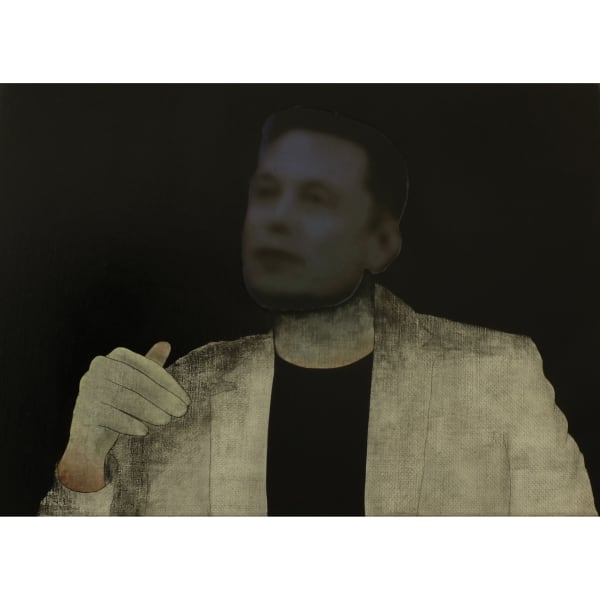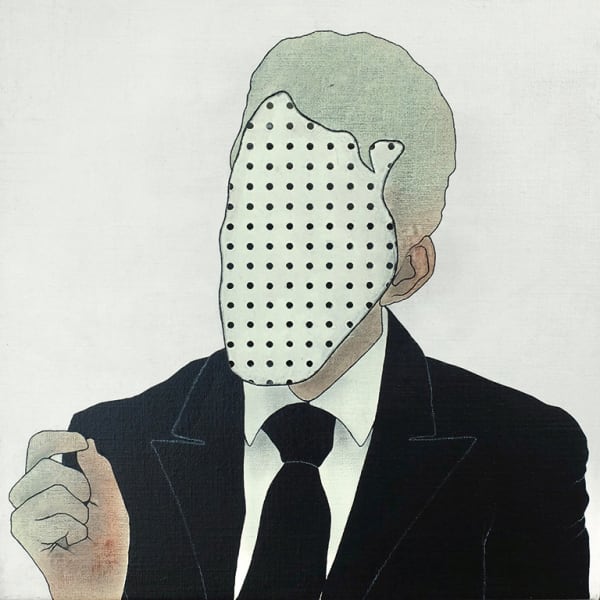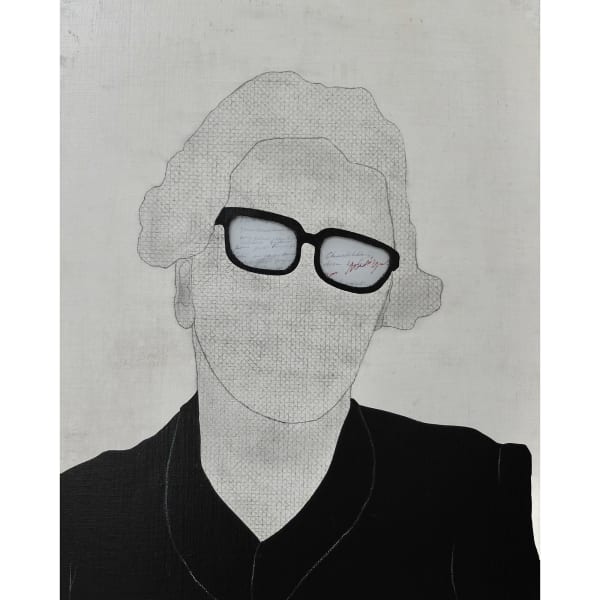YVES VELTER
° 1967, Ostend, Belgium
Lives and works in Ostend, BE
‘Historical’ portraits by Yves Velter
In the history of art, the Etruscan interest in the depiction of the deceased could lead us to assume an ancient interest in individual portraiture. And yet, the heads and facial expressions of the early Etruscan statues are entirely impersonal. It is not until around 300 BC, due particularly to the influence of Greek portraiture, that individual features start to take shape. Later on, during the Roman Empire era, the output of portraits grew and a great diversity of styles and types emerged.
For a number of years now and during the Corona pandemic, Yves Velter has been working on a series of portraits, reflecting his personal view on how the art of portraiture has evolved throughout history. It concerns people who left behind traces in the artist’s mind and who served as inspiration for his typically stylised works.
He connects the things that have touched him with the characters represented, by using a wide range of symbols, at times very personal and other times universal.
Usually, Yves Velter’s portraits are depersonalised and the face merges with the symbolism. We see, for example, a face composed of a sea, or eyes composed of fragments of handwritten letters, whereby the letter from Trees serves as a metaphor – recalling Cézanne’s famous statement “He may be nothing but an eye, but what an eye!”
However, the new characterisation of the person portrayed is often clear: we recognise Christopher Hitchens, Sam Harris, Jordan Peterson, Frida Kahlo, Marvin Gaye, Yuval Noah Harrari, or Hannah Arendt wearing a red necklace...
By cutting the face of each character out of the canvas and placing it behind glass and out of focus, as a print, a deconstruction is created which not only gives the portrait a sculptural aura, but also evokes a certain distance, not only in terms of space but also in the eyes of the viewer. In doing so, the portrait confronts the viewer and his/her gaze in a direct way: not only with the face as a mask, but also with the stratification and complexity of both the image and all forms of communication.
With this series of works, Yves Velter not only looks back in time to what has been, but also reveals the disruption of time and of the way of observing his works in which his technique of drawing is handled in the same way as a brushstroke. The associations that the portraits evoke and depict also emerge in a figurative way.
‘Historical’-portretten
De Etruskische belangstelling voor de beeltenissen van overledenen zou ons een vroegtijdige interesse voor de individuele portretkunst in de geschiedenis van de kunst doen verwachten.
Toch zijn de hoofden en de gelaatstrekken van de vroege Etruskische beelden nog geheel onpersoonlijk. Het is pas rond 300 v. Chr., namelijk onder invloed van de Griekse
portretkunst, dat individuele trekken vorm krijgen.
Later tijdens het keizerlijke Rome breidt de productie van portretten zich uit en viert de grote verscheidenheid in stijlen en typen troef.
Sinds een paar jaar en tijdens de coronapandemie heeft Yves Velter een reeks portretten gemaakt, rekening houdend met zijn persoonlijke blik op de evolutie van de portretkunst doorheen de geschiedenis. Het gaat om mensen die sporen in zijn denken hebben nagelaten en fungeerden ter inspiratie van zijn zo typische gestileerde werken.
Dat wat hem bij de weergegeven personages geraakt heeft, verbindt hij met allerlei symbolen, nu eens zeer persoonlijk, dan weer universeel.
Gewoonlijk zijn de portretten van Yves Velter geanonmiseerd en valt het gelaat samen met de symbolische waarde ervan. Zo zien we bijvoorbeeld een gezicht dat bestaat uit een zee, of ogen uit fragmenten van met de hand geschreven brieven waarbij de brief van Trees dienst doet als codetaal – Cézannes beroemde uitspraak ‘Hij is dan misschien niet meer dan een oog, maar wat voor één!’ indachtig. Maar bij deze nieuwe portretten is het vaak duidelijk om wie het gaat: zo herkennen we Christopher Hitchens, Sam Harris, Jordan Peterson, Frida Kahlo, Yuval Noah Harrari, Marvin Gaye, of Hannah Arendt met het rode halssnoer…
Door het gelaat van elk personage uit het canvas te knippen en achter glas, uit focus en geprint aan te brengen ontstaat er een décalage waardoor het portret niet alleen een sculpturaal aura krijgt, maar ook een zekere afstand opwekt, niet enkel ruimtelijk maar ook bij de kijker. Op die manier confronteert het portret de kijker en zijn blik op een directe manier: niet alleen met het gezicht als masker maar ook met de gelaagdheid en complexiteit van zowel het beeld als van elke communicatie.
Tegelijkertijd keert Yves Velter met deze reeks werken niet alleen terug in de tijd, op wat er geweest is, maar onthult ook de ontwrichting van de tijd en van de manier van kijken in zijn werken waarin het teken-technische op een gelijkwaardige manier als een penseelstreek wordt behandeld. De associaties die het portret oproept en weergeeft, treden ook picturaal naar voren.
Text: Inge Braeckman
expo: 'mémoires', May 2021
-
 Catch me in the bar, 2021
Catch me in the bar, 2021 -
 Christopher Hitchens act II (Historicals) , 2021 Sold
Christopher Hitchens act II (Historicals) , 2021 Sold -
 Elon Act I (Historicals), 2021
Elon Act I (Historicals), 2021 -
 Etienne Vermeersch (Historicals), 2021
Etienne Vermeersch (Historicals), 2021 -
 Mirror touch , 2021 Sold
Mirror touch , 2021 Sold -
 Mirror touch act IV , 2021
Mirror touch act IV , 2021 -
 Visus act I Jordan Peterson (Historicals) , 2021 Sold
Visus act I Jordan Peterson (Historicals) , 2021 Sold -
 Hannah Arendt Act I (Historicals), 2020 Sold
Hannah Arendt Act I (Historicals), 2020 Sold -
 James Ensor (Historicals) , 2020
James Ensor (Historicals) , 2020 -
 Florence (Historicals), 2018
Florence (Historicals), 2018












